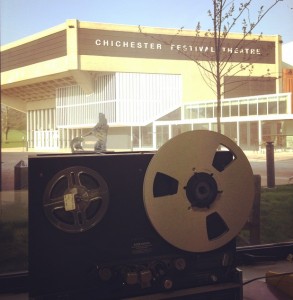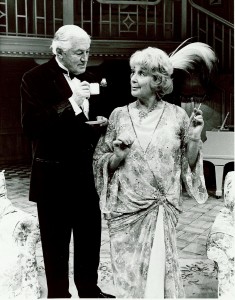
Reel to Reel. Revox transfer. Phrases I never thought I’d be familiar with but the Pass It On project just keeps on surprising us in terms of what kind of heritage content we have to deal with.
Two small plastic bags were handed to me a couple of weeks ago. Inside were yellowing plastic reels, all wrapped up with thin, brown tape. You may know these as reel to reel tapes; before cassettes, magnetic audio tape was wound up on reels, very similar to film stock. There’s no way of listening to these reels without the aid of a Revox machine, a clunky looking device that enables the audio tape to be wound from one reel onto another, whilst passing through a system of rollers and headers that read the magnetic content on the tape, turning it into sound. Easy, right? Not when the machine is older than you are and needs specialist parts to make it work. Luckily, with the help of our Deputy Head of Sound, Alex Green, we’ve succeeded in not only getting the machine going, but using it to digitise old analogue content.
Through this, we’ve a whole world of sound to rediscover – perhaps old sound effects or musical tracks used in past shows, perhaps dialogue or even interviews. It’s the latter that I’ve been working with recently; Donald Sinden, Googie Withers, John McCallam and Keith Michell have all whizzed and whirred through our Revox machine into my headphones and more importantly, into the computer to be kept as part of our Digital Archive. These short interviews were loaned to us by our Head of Finance, whose wife used to record special guests for local hospital radio.

They’re great little windows into the past as you are transported back in time; not just in terms of the differences in elocution and interaction between the people on the recording (the ones I’ve been working with are from 1988) but in the actual quality of the sound itself. I don’t mean quality in terms of standard (though it has been rather tricky to get a satisfactory volume level compared to the ease with which we listen to and turn the volume up on our iPhones) but in a more textural sense. In the same way many people prefer to listen to an old LP instead of a CD, there’s something about the crackle and warmth of analogue that generates a sense of nostalgia. It seems particularly pertinent to be able to have that kind of nostalgic quality on recordings collected as part of aheritage project and I’m really looking forward to working with volunteers on digitising more content.
If you’d like to find out more information about this opportunity, please email us at [email protected] . No special skills are required and full training will be provided.


